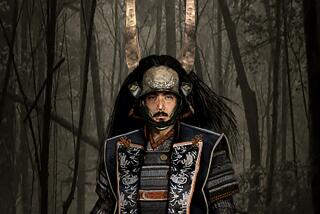ART REVIEW : JAPANESE PRINTS SHOWN AT PACIFIC ASIA MUSEUM
During the 1930s, Japan fell victim to the worldwide depression that had already led to the collapse of foreign markets in the West.
Marked by considerable deprivation, xenophobia, censorship and growing militarism, the period came to be known as kurai tanima or âDark Valley.â Although Japan managed to avoid the repressive artistic and cultural uniformity of Nazi Germany and Stalinist Russia, the avant-garde was decidedly out of favor, its supporters lumped together with communists and union organizers as proponents of âunorthodoxâ thinking.
In printmaking, this avant-garde was associated with the so-called sosaku hanga or âcreative printâ movement. It was characterized by Western stylistic innovation and the artistâs complete involvement in the printmaking process. The â20s and â30s were dominated, however, by the shin hanga or ânew prints.â These benign, commercial ventures borrowed from the motifs and techniques of the famous ukiyo-e tradition, and relied almost exclusively on the independent skill of the professional block carver and printer.
These shin hanga are the subject of âPrints of the Dark Valleyâ at the Pacific Asia Museum through April 19. The selection of over 50 woodblock prints focuses on the work of Toradji Ishikawa, Kiyoshi Kobayakawa, the emigre Frenchman Paul Jacoulet and their mentor/carver, Kazue Yamagishi.
With their voluptuous, sensuous nudes (Toradjiâs âTen Beautiesâ), Vogue magazine fashionableness (Kiyoshiâs âMod Beautiesâ) and Parisian and South Sea Island âexoticismâ (Jacouletâs Gauguin-like stylized figures), the group belied the gloom and aesthetic rigidity of the times by creating populist hybrids of East and West.
The showâs common denominator is Yamagishi, a master carver whose own âLandscapes of the Worldâ series (picture postcard renditions of Sacramento, the Grand Canyon, Paris, Venice, etc.) is marked by a fluid linearity in combination with subtle gradations of tone and color.
Although one might be dazzled by the sheer technique of these prints, it is impossible to ignore the fact that they were designed as commercial product, and as a result lack the formal/modernist cutting edge of the suppressed sosaku hanga .
One might also question the showâs focus on lesser-known (and in this case, somewhat inferior) artists at the expense of shin hanga masters such as Hiroshi Yoshida and Torii Kotondo. Greater historical breadth and a little less reverence for the obscure would have made this exhibit both more enlightening and aesthetically satisfying.
More to Read
The biggest entertainment stories
Get our big stories about Hollywood, film, television, music, arts, culture and more right in your inbox as soon as they publish.
You may occasionally receive promotional content from the Los Angeles Times.










